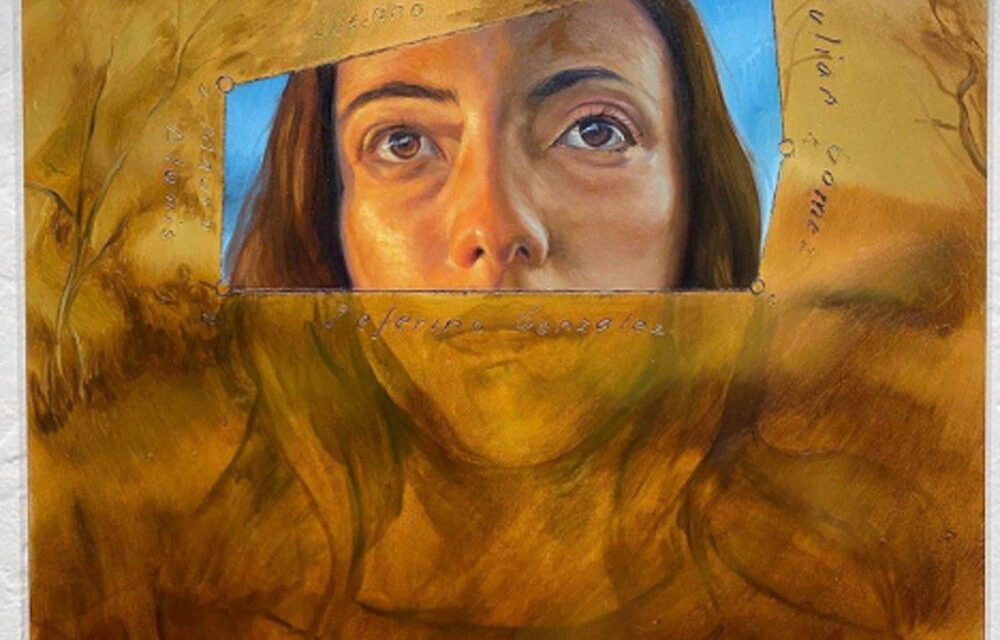October is one of the preeminent months for showcasing the works of Latino artists. Many art museums and galleries across the United States celebrate Hispanic Heritage Month which runs from September 15 to October 15. In San Antonio, Texas one of the premier art shows, Red Dot, also has an annual exhibit that fortunately coincides with Hispanic Heritage Month. This year Andi Rodriguez served as the Red Dot’s Honorary Patron.
Red Dot, in its 33rd year, exhibited the works of over 100 artists, more than twenty of whom are of Latino origin. It is one of the longest-running art shows in Texas and benefits both the artists and the Contemporary at Blue
Star. I am familiar with many of this year’s Red Dot artists including Honorary Artist Cathy Cunningham-Little, Ricky Armendariz, Suzy Gonzalez, Andy Benavides, Guillermina Zabala, Cruz Ortiz, Rubio, Raul Gonzalez, Gabriel Garcia, and Albert Gonzales. Contemporary’s Executive Director Mary Heathcott gave a shout-out to Kaleido, which she noted would give Red Dot a global reach and “elevate the Red Dot show to an immersive augmented reality engagement.”
Andy Benavides, one of the artists in the 2023 Red Dot show and last year’s Red Dot Honorary Artist, has goals to “develop works that create a sensory experience through the use of various experimental mediums.” His work in the Red Dot exhibit succeeds in that objective and is one of the more unconventional pieces. He used a glass mirror as a medium designed to attract the viewer but also to make the viewer an impermanent part of the art piece. Depending on where we stand as observers looking into the mirror, we can be a part of the art object or we can use it as a way to view the art around us.
Benavides is a native of San Antonio and one of the principal leaders in the development of the art district known as Southtown. He studied Fine Arts at the University of North Texas and worked for a brief time in Dallas. His plan was always to return to his “homeland,” the Southside of San Antonio.
Benavides opened a custom graphic design company in 1993 initially doing props and signage for Fiesta Texa and Sea World of Texas. He also consulted with major construction companies, the San Antonio Museo Alameda, and San Pedro Creek Cultural Park in interior and exterior art design. Benavides works closely with many of the local muralists in Southtown, including Joe Lopez, Rubio, Shek, and Los Otros Muralistas.
Benavides considers himself a contemporary artist and thoughtfully avoids creating works that keep him in one particular style of art. He views cultural diversity as an approach to creating art. He considers this approach as a major strength and applies it in the use of his choice of materials and mediums.
We visited Kaleido’s Alamo City Arthouse in Southtown to view and experience a popup art gallery exhibit open only from October 13–22. Kaleido is a San Antonio startup with a dazzling digital platform for the visual arts. The Kaleido Arthouse showcases a mix of local and international artists. In celebration of National Hispanic Heritage Month, the participating artists in the current exhibit identify as Hispanic or Latin@. The works span the genres of portrait and figurative, abstract and expressionist, and pop and urban space art.
One of the international artists featured at the
Kaleido Arthouse in Southtown is Colombian artist Bibiana Camargo who currently resides in
Barcelona, Spain. Two of her works in the exhibit, titled Blossoming Journey I and Blossoming Journey II, draw on her experiences and those of her fellow countrywomen who migrated to seek a better life. She developed the artwork for this show to portray the positive process of unforced migration that offersnew beginnings, new spaces, and new places that allow people to grow.
Immigration data shows that nearly 500,000 Colombians left their country in 2022. Many migrated because of prolonged armed conflict, economic instability, and slow recovery from COVID-19. However, Camargo was a voluntary migrant with dual Spanish and Colombian citizenship who left her native country to learn more about art and design. She wanted to emphasize the contrast between old and new places, the experiences of humans who want a better future, and the ways migrants must adapt to the complexities of migration.
Colombia leads South American countries in migration to the United States and currently represents one of every four immigrants from South America residing in the United States. The topic of migration is close to Camargo’s own experience having migrated to Spain seven years ago. In her artwork, she expresses the difficulties of migration even in instances where it is not necessarily a forced migration. She argues that migration is a universal phenomenon representing the movement of people who yearn for a new beginning, a reality that she attempts to capture in her paintings.
Hispanic Heritage Month Highlights Latino Artists in Exciting Venues










